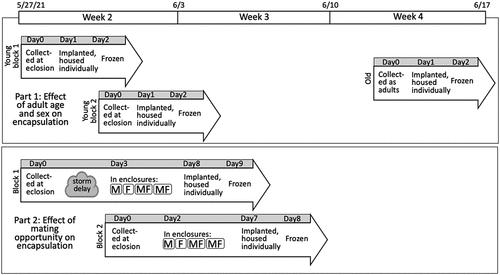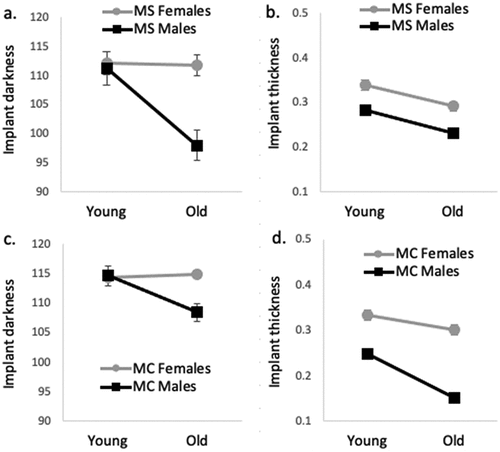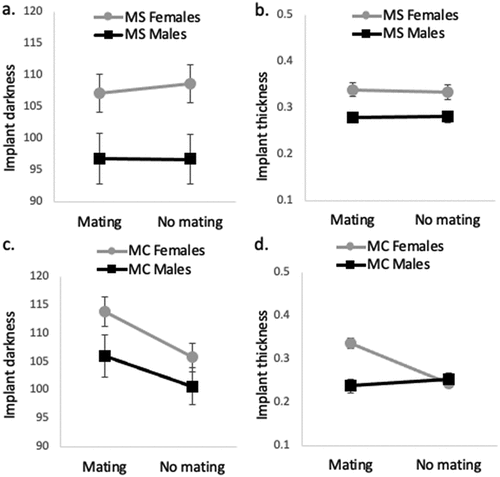Figures & data
Fig. 1. Experimental design. The time bar across the top of the figure represents the date and week of mass eclosion in our local area. For both Part 1 and Part 2 experiments, males and females of both M. septendecim and M. cassini were included.

Fig. 2. Mean (± 1 SE) differences in implant thickness among female and male M. septendecim (MS) and M. cassini (MC). Groups that are statistically significantly different according to Tukey’s HSD are shown by different letters (A–C).

Table 1. The effect of species, sex and the interaction between species and sex on implant thickness. Values that are statistically significant at a level of P < 0.05 are in bold text. N = 47–57 individuals per species and sex. See Table S1 in Supplemental Data for full details about sample sizes.
Table 2. The effect of age on implant darkness by species and sex. Nonparametric Wilcoxon/Kruskal-Wallis χ2 tests were used. Values that are statistically significant at a level of P < 0.05 are in bold text. N = 47–57 individuals per species and sex. See Table S1 in supplemental data for full details.
Fig. 3. Mean (± 1 SE) differences in implant darkness (a) and thickness (b) among young and old adult female and male M. septendecim (MS) and mean (± 1 SE) differences in implant darkness (c) and thickness (d) among young and old adult female and male M. cassini (MC).

Table 3. The effect of age and sex on implant thickness. ANOVAs were performed on each species separately. Values that are statistically significant at a level of P < 0.05 are in bold text. N = 31–46 individuals per species and sex. See Table S7 in Supplemental Data for full details about sample sizes.
Fig. 4. Mean (± 1 SE) differences in implant darkness (a) and thickness (b) amongst female and male M. septendecim (MS) housed in mixed sex groups (mating) and same sex groups (no mating) and mean (± 1 SE) differences in implant darkness (c) and thickness (d) amongst female and male M. cassini (MC) housed in mixed sex groups (mating) and same sex groups (no mating).

